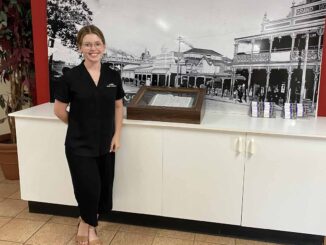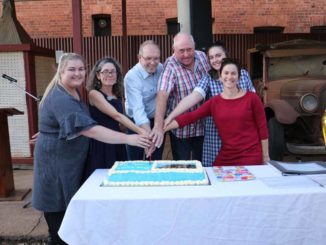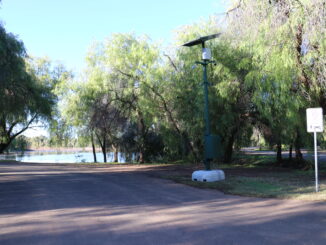
excellent results in pasture growth and an increase in native birds on his property. The picture above shows how lush his pasture was in 2016. ▪ Photo contributed
Local Land Services has been running a Rangeland Rehabilitation Program in the western area since 2007 that is producing some brilliant results, particularly in the wake of recent good rainfall.
Paul Theakston, Senior Land Services Officer Rangelands Rehabilitation, is currently in charge of the project and said landholders in the White Cliffs area have had some incredible results following rain at the end of April.
“On a particular property that recorded 21mm of rain, water that would have previously flowed down an erosion gully was calmed and spread over the adjacent floodplain over 300 hectares,” Mr Theakston reported.
“Previously, 200mm of rain was required to activate this same floodplain and, in addition to this, the erosion gully can now start to rehabilitate.”
Mr Theakston said 30 landholders within the Cobar Shire have joined the Rangeland Rehabilitation Program since 2008.
“However, before that, Rusty Mitchell from Florida had been pioneering the waterspreading technique in the Cobar area since the 1970s,” Mr Theakston said.
While the Cobar Shire didn’t get as much recent rain as the White Cliffs area, Mr Theakston said where the rain did fall within the waterspreading systems in the Cobar Shire, all of the rainfall completely soaked in.
“There was no runoff.
“Now there is a concentration of healthy, green groundcover within the waterspreading systems, whereas in the adjoining area, the groundcover is still slowly emerging and growing,” he said.
One local landholder, Robert Neate at Mopone just north of Cobar, joined the program in 2010 and, after seeing some very good results, he regrets not having started sooner.
“There’s an overwhelming response in the rain,” Mr Neate told The Cobar Weekly.
As part of implementing waterspreading techniques in the Rangeland Rehabilitation Program, Mr Neate has also installed a hinge joint fence as recommended, which he said has (to a certain extent) excluded kangaroos and feral goats and helped him to control his stock which gives the paddocks time to regenerate.
“What I have found is the birds tend to like to perch on top of the [waterspreading] contour banks, it’s a kind of habitat for them.
“I recently saw a wild turkey, I haven’t seen one since 1985.
It seems very favourable for ground dwelling birds. We have an increased population of native birds, hawks and I’ve also noticed more marsupial mice there too.
“It certainly has encouraged me to look at doing more,” Mr Neate said.


